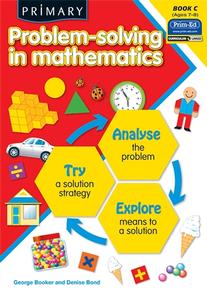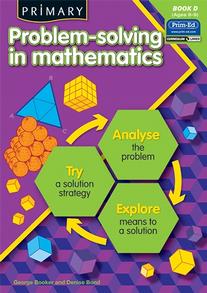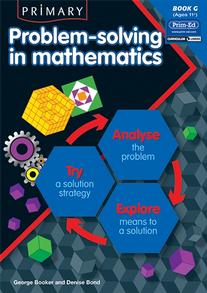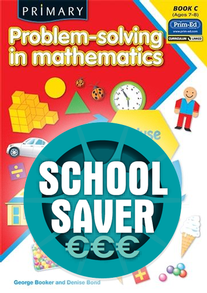-
0
Your cart is currently empty.
-
0
Your cart is currently empty.
Primary Problem-solving in Mathematics: Book A
Preview Book
- Format: Photocopiable Books
- Series: Primary Problem-solving in Mathematics
- Code: 6030 | ISBN: 9781846541827
- Subject: Mathematics
- Level: Senior Infants
Price:
19.95
Quantity:
Book A in the Primary Problem-solving in Mathematics series provides photocopiable activity worksheets for practising problem-solving skills and mathematical thinking.
Book A Features:
- worksheets that focus on: spatial visualisation, logical reasoning, interpreting, analysing, organising and using information, strategic thinking and using patterns
- activities challenge pupils to use strategies and different approaches to solve the problem
- worksheets incorporate a variety of presentation styles: problems presented visually and in word problem format
- extensive background information provided on the skills needed for effective problem solving
- teachers notes include mathematical objectives, curriculum links, extension activities and answers
- suitable for Infant Classes
-
As a fan of facilitating higher-order thinking skills, I always get very worried when a textbook comes out with “Problem-solving” in the title. Problem-solving is one thinking skill that is misunderstood by many people. Although all teachers know that it’s really important, many don’t actually know what it means. I’ve often heard them described as the word problems at the end of a maths chapter. I’ve often seen them being “translated” into maths sentences, rather than actually doing any problem-solving at all. So, it was with a sense of relief that I picked up Prim-Ed’s mathematical problem-solving book to see that it does recognise key skills in problem solving. Although adapted from the UK curriculum, this set of 7 books (from Senior Infants upwards), is probably more relevant to the Irish curriculum that any other Irish curriculum-specific book on the market. The Irish curriculum recognises problem-solving as a key element of mathematics, yet I haven’t seen a mathematics book, which goes into enough detail of how to problem solve. Prim-Ed’s book uses a cyclical three-step procedure to problem solve: Analyse the Problem, Explore a means to a solution and Try a solution strategy. What most books forget is the analysis section so this is very good. I was also happy to see that the examples given by the book were very good. Drawing pictures and diagrams, analysing relationships between numbers and looking for patterns are all encouraged. I like the fact that the model is cyclical so that if something doesn’t work, (or if there’s another way to do things), we can start the procedure again. The content of this programme is super, however, and I would recommend it to anyone.
Anseo.net















